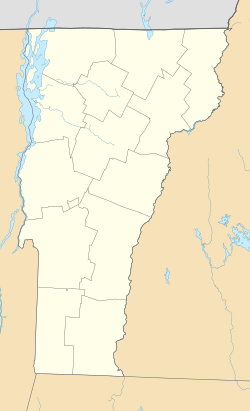Camp Marbury facts for kids
Quick facts for kids |
|
|
Camp Marbury Historic District
|
|
| Location | 243, 245 & 293 Mile Point Rd., Ferrisburgh, Vermont |
|---|---|
| Area | 7.3 acres (3.0 ha) |
| Built | 1921 |
| MPS | Organized Summer Camping in Vermont MPS |
| NRHP reference No. | 100003222 |
| Added to NRHP | December 6, 2018 |
Camp Marbury was a special summer camp just for girls. It was located right on the beautiful Lake Champlain in Ferrisburgh, Vermont. The camp started in 1921 and was run by a family. It was a popular place for girls to spend their summers until 1942. The camp had to close because of problems during World War II. Today, the land where Camp Marbury once stood is recognized as a historic place.
The Story of Camp Marbury
The land for Camp Marbury was bought in 1921. It was purchased by Mary P. and Henry Dike Sleeper, along with Hugh and Helen Worthington. The Sleepers lived in Northampton, Massachusetts. They had worked as counselors at Aloha Camp before. Aloha Camp was one of Vermont's oldest summer camps.
The Sleeper family, and later their children, ran Camp Marbury. It could host as many as fifty campers at a time. Girls at the camp enjoyed many fun activities. They could swim and play in the lake. The camp also offered tennis, horseback riding, and craft programs.
Camp Marbury was affected by the war. During World War II, there were rules about how much food and supplies people could buy. This was called rationing. Because of these difficulties, the camp closed in 1942. In 1945, many of the camp's items were sold off. However, Harriet Sleeper kept a summer home on the property. She lived there until she passed away in 1975.
Exploring the Camp Grounds
Camp Marbury was built on about 7.3 acres (2.95 hectares) of land. This land was right on the waterfront, just north of the Basin Harbor Resort. The buildings at the camp were constructed between 1900 and 1942. They were built in styles like Adirondack and Bungalow. Some of the buildings were even designed by architects specifically for the camp.
After Harriet Sleeper's death in 1975, the property was divided. It is now owned by three different private owners. One of the camp's buildings, called the "Junior Roost," was moved. It is now part of the nearby Lake Champlain Maritime Museum. Even though the land is now separated, you can still see where the camp grounds and its facilities once were.



